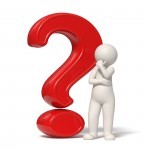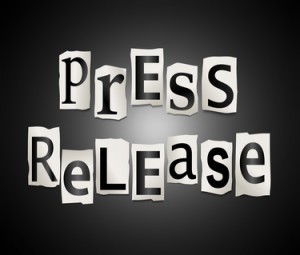Ruth Ford Elward's Blog, page 3
September 9, 2015
Press Releases
For freely offered writing Resources go to RuthFordElward.com
PRESS RELEASES
There are many examples of press releases on the internet. Most of the successful press releases created by authors or literary publicists are those that tie in the author’s book with some sort of community or national event.
For instance, does your book feature a women’s issue?
If that issue is domestic violence then tie in a book signing event with a national domestic violence conference, where you’ll discuss your character’s dilemma and what women can do when they find themselves in a similar situation.
It does not matter if your book is a work of fiction or not in these circumstances. The press LOVES to get ready to print press releases especially when linked to a subject of public importance.
September 2, 2015
Before Releasing a Book
For freely offered writing Resources go to RuthFordElward.com
BEFORE RELEASING A BOOK
There are a number of steps an author can take when getting ready to release a book. The overall goal should be to get the book noticed first, not just to make money.
Any writer that thinks they’ll get rich right away will be disappointed. There are instances where someone might get lucky and hit it big with their first book, but this is incredibly rare. Even in those cases, it takes time for enough people to notice it and create a buzz that will pay off.
Therefore, anything the author can do to get their book noticed ahead of the release date is essential.
It’s often recommended to set aside a number of books that can be given away as a promotional item. Some of these will be given to selected readers with the understanding a review is expected. 
These readers can be from your blog following, your Twitter followers, friends or family. Any chosen reader is going to appreciate being given something for free, the review they write tends to be more generous.
After all if the author cared enough about this selected group to give them a free copy, they’ll feel obligated to be supportive.
Additional books can be set aside for those professional promoters and reviewers that are listed on the Internet. When sending copies to this group include any additional promotional material well in advance of the release date. This way they will have time to read the book and review materials so they can form an opinion and write a review. Make sure to let them know an approximate date that you’d need the review completed.
This is also the time to craft a great press release, actually several press releases and send them out to various media outlets, perhaps setting up some radio interviews to correspond with the launch of the book or a few weeks prior to the launch.
You’ll also want to create a pre-order book page on the distributor sites you’ve decided to use, this way as the book gets noticed prior to release, readers can pre order it. Pre orders help to boost your ranking the moment your book is released.
Well before hand, you are going to need a website, a social media presence and a basic press kit.
All of which are designed to reach out to the larger public and if done well will work in a viral fashion to establish a presence for you and your book that will translate into sales and events where you can sell your books.
August 26, 2015
How Long Will Things Take?
For freely offered writing Resources go to RuthFordElward.com
HOW LONG WILL THINGS TAKE?
Unlike other ‘Field of Dreams’ just building it and hoping they will come doesn’t happen.
While you’re writing your book, if you are attempting to be traditionally published, you can expect the following averages:
Time to find an agent: 6-9 months
Time to place the manuscript with publisher: 6-12 months (and YOU pay the postage expenses incurred by the agent).
Time for publisher to print and release your book: 6-9 months.
So, the total time from beginning to end could be two years or more from acquiring an agent to the release of your book into the marketplace.
In general, self-publishing cuts out the need for the agent and assuming you’ve completed the writing of your book.
The following time frames are average:
Time to research and decide on publishing group: up to 3 months
Time through publication process and release: 2-6 months (if creating hard copy books as well as eBook)
Obviously, if time is an issue for you, then choosing to self-publish is the option of choice.
August 19, 2015
Creating an Author Page
For freely offered writing Resources go to RuthFordElward.com
CREATING AN AUTHOR PAGE
Physical book copies usually include a brief author page. More often than not this page will mention the author’s background, where they live, awards received and/or something about previous works. Maybe even what they enjoy doing outside of their writing or what brought them to writing in the first place.
Publishers don’t want anything too long and drawn out, after all that would increase the number of pages to a hard copy and it’s often thought that readers skip over this part, anyway.
When it comes to online distributing though, things are a little different. The author page isn’t necessarily something that gets included in the book. Instead, that information will be found on whatever distribution site is being used. Because it isn’t physically part of the book, authors have a great deal of freedom in how much and what they put on their author page.
If it’s an author page on a distributor’s site the best thing that an author can do other than their bio is, when allowed, advertise any other books they have written and include any sites used to promote their books. In the case of an author page on a Social Media site, it gives a starting point for a conversation with their audience.
On an authors’ website, besides the about me page, a blog is highly recommended, one that is updated regularly, whether it is a post about a book or personal thoughts and experiences of the author. These can all be lead in’s for a reader to communicate with the writer and get to know them in a more intimate way. Even if the author isn’t getting another book out for a while.
This gives interested readers a place they can go to keep in touch with the author and read what’s on an author’s mind in between releases.
Think of an author’s page as a form of a calling card to the world and another way to build a fan base by giving a reader insight to who the author is and where they come from. Publishers of the traditional sort, look at these types of platforms to see how you interact with your audience as well as how large you’ve grown your following.
If you’re not sure how to go about creating an author’s page, the best way to put one together is to do research. Collect bits and pieces that you like from other author sites that you respect. See how they do their pages.
August 12, 2015
Writing a Book Description
For freely offered writing Resources go to RuthFordElward.com
WRITING A BOOK DESCRIPTION
To say that writing a book is a challenge would be an understatement. Writing a book is a huge commitment, and it doesn’t just end once the book has been finished. Publishing and Promoting a book can be just as challenging a task as actually writing the book.
In a way, promoting the book is just as important as writing it. After all, it doesn’t matter if the author wrote an incredible book if nobody knows that the book even exists.
Many are saying that because of online publication and the increase in self-publishing it is easier for new writers to get noticed. Most people who are saying this though aren’t actually writers themselves. It would be more accurate to say that thanks to the support of sites like Amazon and Smashwords, self-publication has now become a more viable option for many writers.
However, along with this has come the responsibility of promoting your work and an important part of that is creating your book description.
Because so many writers are self-publishing their works and putting it in the online marketplace, it means there’s that much more competition, so writers have to do everything they possibly can to make their book seem enticing.
In order not to get lost in the sea of other self-published books, the two things that will potentially draw in the reader are the book cover and arguably the more important, the book description.
Some will say, the reason the book cover isn’t quite as important is because the book cover mostly exists to draw the reader in so the potential reader will look at the book description. Very few readers will ever say they bought a book just because of the cover, instead saying something like the cover caught my eye, but the description on the back of the book made it sound interesting.
Despite the fact it is infinitely shorter then writing an actual book, many writers will struggle more with their book description than any other part of the book.
If you ask a writer about their book, they could probably talk for hours about their writing, the messages they were trying to convey, what they were thinking when they wrote certain pieces of dialog or characters. A book description doesn’t allow for any of this, with most descriptions being roughly around a mere 150 to 200 words, which boils down to two or three paragraphs.
Book descriptions have to be short and to the point, but at the same time they also have to capture the interest of the reader and not reveal too much.
One should consider only including major plot points, not anything that would be a sub-plot or a minor piece of the story, even if they are exciting. With such a limited word count, it is important to use powerful words that literally capture the attention of the reader and make the book enticing.
Don’t use the word ‘scary’ if you can use the more powerful word, ‘terrifying’. At the same time, not every single word can be a power word, otherwise they go from being powerful to just being average.
At most, there should be six to ten power words in the total description, and they should ideally be spaced at least a sentence apart.
Taking the time to create a book description that will enthrall and excite a reader can make or break a book sale. Think about it…it is the elevator pitch gone digital. You literally have 30-60 seconds to hook the reader and interest them in your work. Taking the time to get it right will pay off in the long run.
August 5, 2015
Setting the Price for a Printed Book
For freely offered writing Resources go to RuthFordElward.com
SETTING the PRICE for a PRINTED BOOK
The size of a book plays a role, so does whether or not the book is hardcover or paperback and whether it is fiction or nonfiction in determining the price.
The average fiction novel that gets published tends to be right around 350 pages.These books can run from $24.95 to $34.94 if they are hardcover. Softcover or paperback books are much cheaper, typically being around $9.95 to $18.95. Nonfiction books are unfortunately a little harder to price since it is more dependent on the actual content.
Nonfiction books will often contain charts, diagrams, quoted research, and statistics which makes it vastly different from pricing a fiction book that simply tells a story. The best bet for determining a price of a nonfiction book is looking at other similar books and seeing what they’re selling for, but even this can sometimes cause a wide range for pricing.
If you are self-publishing, then you have to take into account the percentages that will be taken out of the sales price by companies like CreateSpace, Lightning Source and Lulu.
If you’re printing yourself, you’ll need to consider the percentage taken by distributors and/or bookstores for they will want at least 40-55% of the sales price.
This will help you in negotiating with your printer, as you will need to keep the actual production costs as low as possible so that you can keep your pricing competitive with other titles.
If you have a publisher, they will take a percentage of the sales price. So, working backwards from there, should help you arrive at a percentage that you will receive as the author.
In this electronic age though there are plenty of self-published books that are being sold online and don’t actually have a physical form, which means that the traditional pricing rules wouldn’t apply. Part of it is dependent on how many other books the author has published, as many authors will set their book on the lower end of the price spectrum because this will naturally be more appealing to readers.
As unromantic as it sounds, setting a price that readers will accept, and still leave yourself enough money to live on is a delicate balance, so setting the price for your book is an important step.
July 29, 2015
Setting the Price of a Self-Published eBook
For freely offered writing Resources go to RuthFordElward.com
SETTING the PRICE of a SELF-PUBLISHED eBOOK
Writers are faced with a number of challenges when they are working on their book and among them is how to price it. Unfortunately, once the book is finished, the work is not done.
Going through the process of publishing can be just as challenging as writing the book itself.
One of the biggest factors that potential readers are going to take into account when they’re browsing through books is how much the book costs.
Even if something looks appealing, if the price is too high it might be passed over.
Most eBooks that have been successful have sold for no more than $12.99, with most of them being in the range of $2.99-$4.99.

For example, Amazon gives 70% royalty to each book sold as long as it is priced within $2.99 and $9.99, which is why most books tend to be priced around that. Looking at Amazon for pricing is a valid strategy considering the quantity of books sold there on a daily basis.
This may not seem like a lot of money, but when you consider that the quantity factor will be at work and you will be making approximately 70% of the price of a book, it doesn’t seem to sting quite so much.
Take note, other distributing sites will have their own parameters and should be considered as well.
July 22, 2015
Website and Social Media Costs
For freely offered writing Resources go to RuthFordElward.com
WEBSITE and SOCIAL MEDIA COSTS
Having a website and a presence in Social Media is critical these days for any author.
The big question that usually arises is if the author should do much of this step himself. The answer depends on the individual’s comfort with technology and having experience in creating marketing materials.
Because this is such a vital component to any author’s success, I will explore in depth how to do much of your marketing on a shoestring budget in later posts.

In general, as a rule of thumb, when hiring a website designer expect to pay anywhere from $50/month to up to $3,500 for the development, launch of an author’s website and for ongoing assistance with social media.
There are many companies out there that actually specialize in developing websites specifically for authors, so spending a little cyber-time can yield some good bargains.
July 15, 2015
Reviews
For freely offered writing Resources go to RuthFordElward.com
REVIEWS
In some cases writers seek out sources to read and review their books in order to have comments for marketing purposes.
There are a number of ways to garner reviews for your book. Some of the most notable reviewers to pursue and those who will work with self-published and eBook formats are listed on this website: http://www.newpages.com/npguides/revi...

Additionally, there are companies who carry a lot of ‘weight’ when they review your book. Kirkus is one of the ‘biggies’, the fee for this can run over $500, but as they state on their website:
“We will distribute it to our licensees, including Google, BN.com, Ingram, Baker & Taylor and more.
On top of that, our editors will consider it for publication in Kirkus Reviews magazine, which is read by librarians, booksellers, publishers, agents, journalists and entertainment executives.
Your review may also be selected to be featured in our email newsletter, which is distributed to more than 50,000 industry professionals and consumers.” https://www.kirkusreviews.com/author-...
So, unless you are with a major publisher, chances are you will have to pay for the privilege of being reviewed or come up with creative ways to elicit creditable reviews.
July 8, 2015
Translations of your Published Work
For freely offered writing Resources go to RuthFordElward.com
TRANSLATIONS of your PUBLISHED WORK
When an author decides to have a book translated into another language, how do they know what language might be the most profitable?
To start with, there are three aspects that should be considered, one is the popularity of the book in general.
The second is, what language would allow the book to reach the most prospective readers and then the third is what appeal the book might hold for those of a different culture.
If an author wants to earn additional profits from a book by having it translated into another language or many languages, it makes sense to start with a book that has sold well in your native tongue.
While it can happen, a book that is not doing well in a writer’s own language can skyrocket in sales in a different culture, however, it’s not likely. Choosing to translate a book that has already proved itself is the safe bet.
When considering what language might be the most profitable, one should take into consideration the number of people who speak that language.
For instance, by sheer numbers, Spanish and Chinese will be the most likely languages to yield a profitable translated book as they are two of the most widely spoken languages worldwide.
More than 937 million people in the world speak and read Chinese, while 332 million speak and read Spanish according to a survey by the Summer Institute for Linguistics.
With electronic book companies, like Amazon, supporting a number of different languages on their electronic readers, it is easier and cheaper than ever to publish a book in translation.
Keep in mind, however, that not all cultures are like the United States where the electronic reader has been widely embraced. People in many other cultures still prefer to read printed books.
Remember also that the Kindle, in particular, was not offered by Amazon in the Spanish market until 2011 while Amazon’s Chinese market did not offer Kindles there until 2013.
This may mean that in order to have a profitable translation, the best book medium — print or electronic — will need to be determined for your target language.
A final aspect to consider when deciding what translation might be most profitable is to look at the appeal of the book to people of that particular culture.
Some books have universal themes that will translate well and be appreciated by people of a variety of languages.
Other books might appeal better to people of one culture than another. A book set in the time period of the Spanish War of Independence, for example, might have more appeal to Spanish readers, than one set against to backdrop of the Tiananmen Square protests.
Offering a book in translation is a great way to increase the profitability of a novel. These translations allow people who speak and read different languages to enjoy a particular book they may not be able to read otherwise.
In order to get the most bang for the buck when deciding on a language, make sure your book is one that will appeal to people of that culture and that the people can access the book in the form in which you publish it.
Costs for having a book translated generally run anywhere from $15/$35 per hour and is largely dependent on the length of your book and your time frame. Many translators can be found via writing and freelance sites (such as Guru.com, Elance, or Odesk).
Resist the urge to use a universal translator program (such as Babel Fish, or Google Translate) as they only approximate the translation and do not translate it like a native speaker would.
Likewise, most translation software that you can purchase will not give adequate results, and are only intended for use by those wanting to translate business documents so that they can read them.
Native speaking translators are the ONLY credible way to go.
Ruth Ford Elward's Blog
- Ruth Ford Elward's profile
- 9 followers




